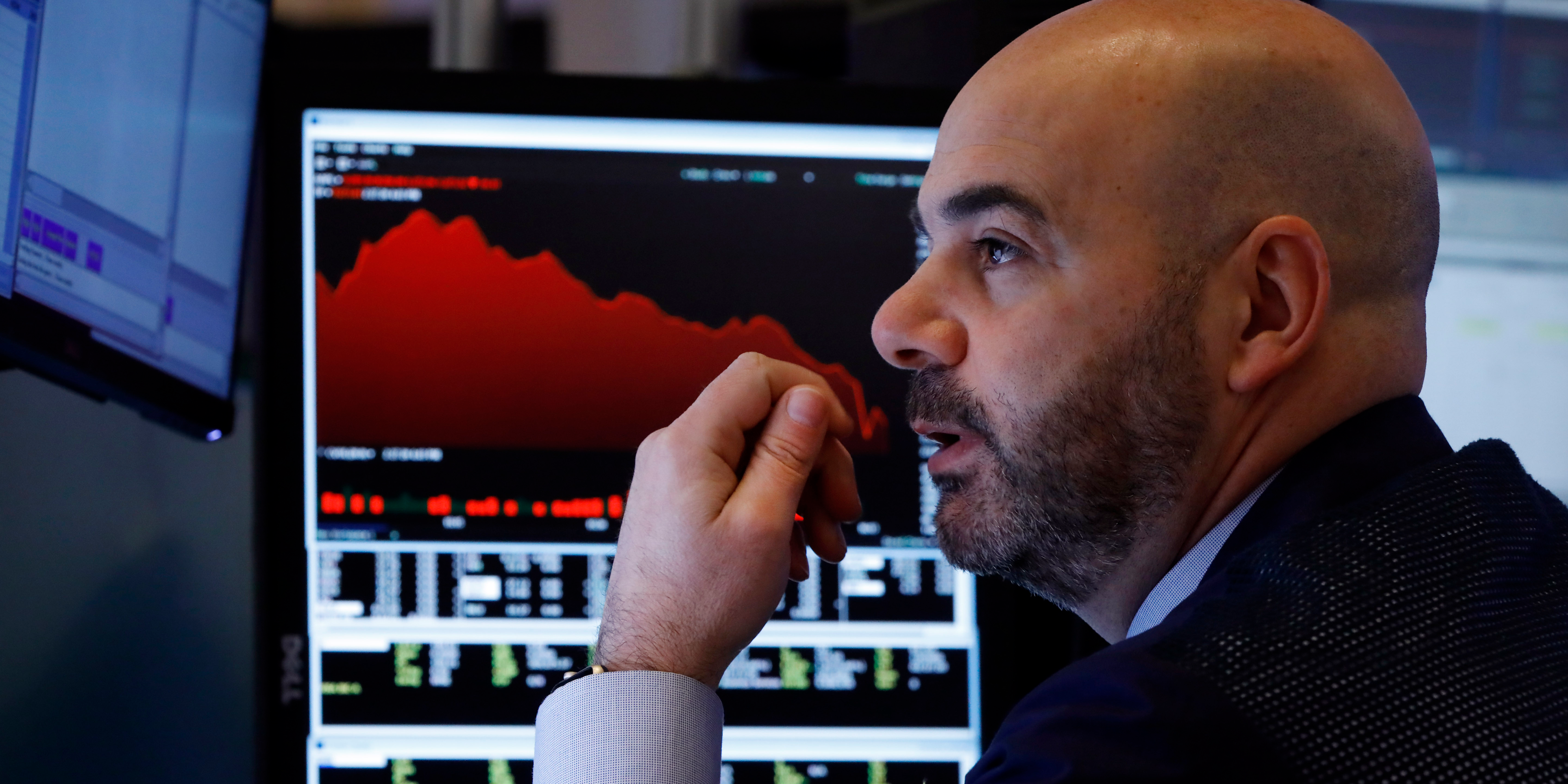- On Tuesday, the 10-year US Treasury yield fell to a new low of 0.936% as investors continued to snap up safe-haven assets amid coronavirus fears. It’s the first time that the benchmark yield has fallen below 1%.
- The Federal Reserve on Tuesday slashed rates by a half-percentage point in an effort to protect the US economy from losing steam amid a potential coronavirus outbreak.
- Stocks initially spiked but pared losses later, showing the rate cut didn’t convince investors to buy into risky stocks as the coronavirus continues to spread.
- Still, the bond rally righted the previously inverted yield curve between the 3-month and 10-year bonds, a popular recession signal.
- Read more on Business Insider.
The 10-year US Treasury yield fell to a new low Tuesday as investors continued to pile into safe-haven assets amid a coronavirus-induced market sell-off.
The yield on the benchmark long-term treasury bond fell to an all-time low of 0.936% on Tuesday, the first time it’s ever broken below 1%. The 30-year US Treasury bond yield also hit a fresh historic low of 1.601%.
The long-term bond yields fell as investors continued to rush into safe havens, dumping riskier assets such as stocks. On Tuesday, the Federal Reserve slashed rates by a half-percentage point in an effort to protect the US economy from losing steam amid a potential coronavirus outbreak.
The move to lower rates was the largest one-time cut and first emergency cut from the Fed since the financial crisis. While the timing of the cut was unexpected, the cut itself was not – bond yields have been falling lately, signaling that traders were expecting the Fed to move rates lower as soon as its meeting March 17-18.
While stocks initially spiked after the Fed slashed rates, they retreated and continued slipping lower, showing that the cut didn't do much to convince investors to take on outsized risk as coronavirus continues to spread, threatening global growth.
"The markets had priced in a 50 basis point easing from the Fed and they delivered," Matt Forester, chief investment officer at BNY Mellon's Lockwood Advisors told Markets Insider. Still, the timing was a bit of a surprise, as the Fed announced its cut just after a G-7 meeting that produced little in the way of coordinated policy change, Forester added.
The bond rally - prices move inversely to yields - briefly righted the inverted yield curve between 3-month and 10-year US Treasuries, a popular recession signal. On Tuesday, the 3-month yield traded at 0.932%, falling below the 10-year yield for the first time since inverting in February.
"This is the second time in the span of a year the Fed could short circuit a recessionary signal from an inverted yield curve," Forester said.
The yield curve should steepen as short-term rates fall faster than long-term ones, Kathy Jones, chief fixed income strategist at the Schwab Center for Financial Research, wrote in a Tuesday note. Even though interest rates are at historic lows, there is room for them to fall further, she said.

